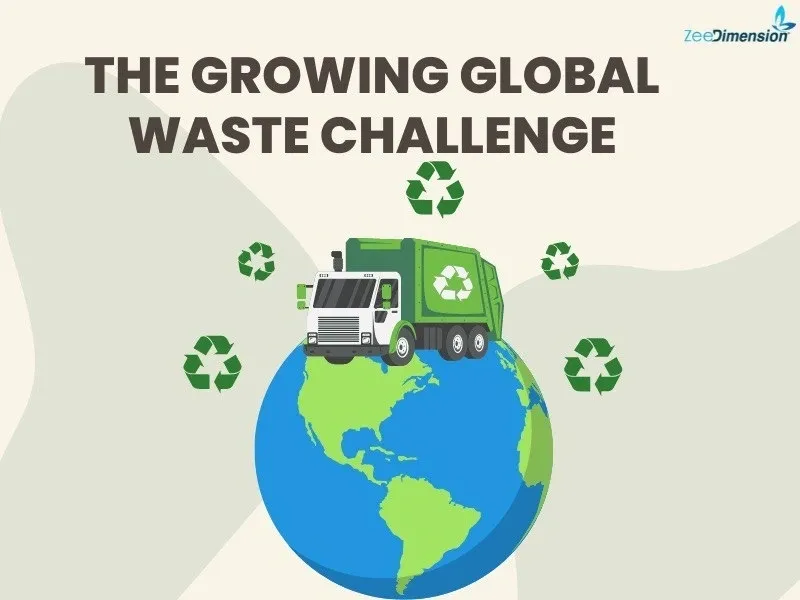
Is the world’s waste problem growing fast?
The problem of waste in the world is getting worse. Waste creation has increased dramatically in the last few decades and is predicted to continue rising. Worldwide, more than two billion metric tons of municipal solid garbage are produced each year; estimates indicate that by 2050, this amount could increase by around 70% to 3.4 billion metric tons.
Rapid urbanization and population increases, particularly in places like South Asia and Sub-Saharan Africa, are the main causes of this rise. Interestingly, even though they only comprise 16% of the world’s population, high-income nations produce over one-third of all waste.
📷
To address this problem, urgent action and effective waste management strategies are essential to reduce environmental and health impacts. Let us explain one effective solution: a pneumatic waste collection system.
What is a pneumatic waste collection system and How Does It Work?
📷
A pneumatic waste collection system, or automated vacuum collection (AVAC) system, is an advanced method for trash management.
-
Trash Disposal: Residents or businesses deposit their waste into specialized intake hatches for different types, such as general waste, recyclables, or compost.
-
Transportation: The garbage is sucked down underground tunnels at a rapid pace to a central collection station by the powerful air pressure produced by industrial fans.
-
Collection and Compaction: The garbage is collected, compacted, and sealed in containers at the central station before being sent to landfills, recycling centers, or composting farms.
Works 24/7 for continuous, efficient waste collection.
What Are The Environmental Advantages Of Using Pneumatics?
1- Reduced Emissions: These systems substantially cut down on air pollution from vehicle exhaust and greenhouse gas emissions by doing away with the need for conventional waste collection trucks.
2– Lower Energy Consumption: Centralized waste collection via pneumatic tubes is often more energy-efficient than the fuel used by multiple collection vehicles.
3– Reduced Traffic Congestion: With fewer waste collection trucks on the roads, traffic congestion is reduced, resulting in lower overall vehicle emissions.
4-Increased Recycling Rates: By separating different types of waste at the source, these systems can increase the efficacy and efficiency of recycling initiatives.
5-Decreased Litter and Pollution: Because waste is conveyed in enclosed tubes, there is less chance of litter and pollution from incorrect or overfilled disposal methods.
6-Enhanced Urban Aesthetics: Pneumatic systems contribute to the creation of cleaner, more aesthetically pleasing urban settings by doing away with the necessity for huge rubbish containers on streets.
Which industry are pneumatic systems mostly used in?
Cities like Stockholm and Barcelona have implemented these systems in select areas. Also, Hospitals and warehouses are early adopters, enhancing waste efficiency and hygiene.
Corporations are increasingly integrating pneumatic systems into green initiatives.
What is the future of waste management?
As urban areas expand, the need for sustainable solutions such as pneumatic waste systems will become increasingly important. More communities, businesses, and cities are adopting automated, efficient, and environmentally friendly waste management approaches.
Conclusion :
The growing waste problem requires urgent attention and innovative solutions, especially as waste generation increases in rapidly urbanizing areas. Traditional waste management methods are proving inadequate, making pneumatic waste collection systems a viable alternative with benefits like reduced emissions, lower energy consumption, and enhanced recycling rates. Embracing automated and eco-friendly waste management strategies is essential for addressing this crisis and promoting a healthier planet. Prioritizing sustainable solutions will better prepare us to tackle the escalating waste challenge effectively.







